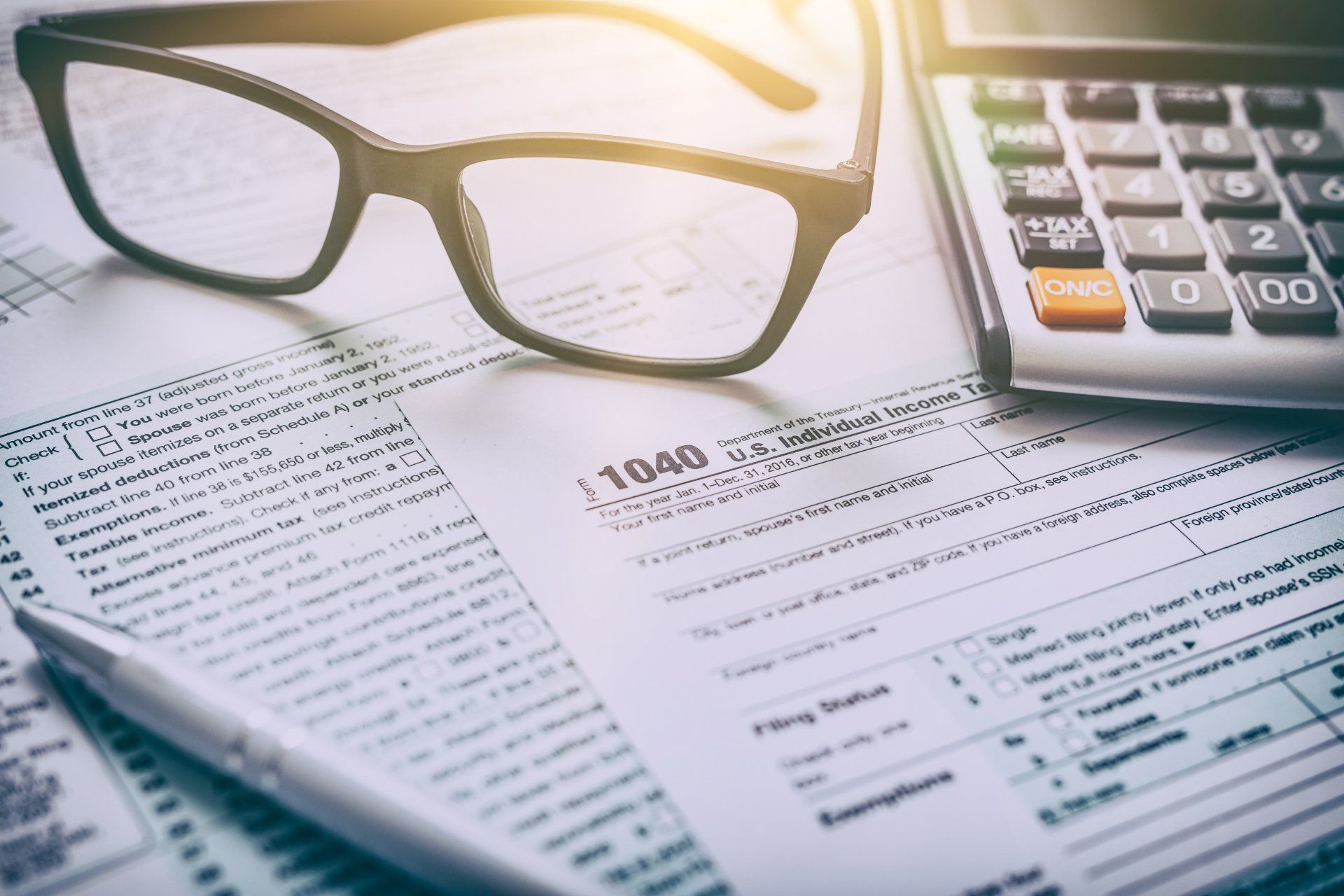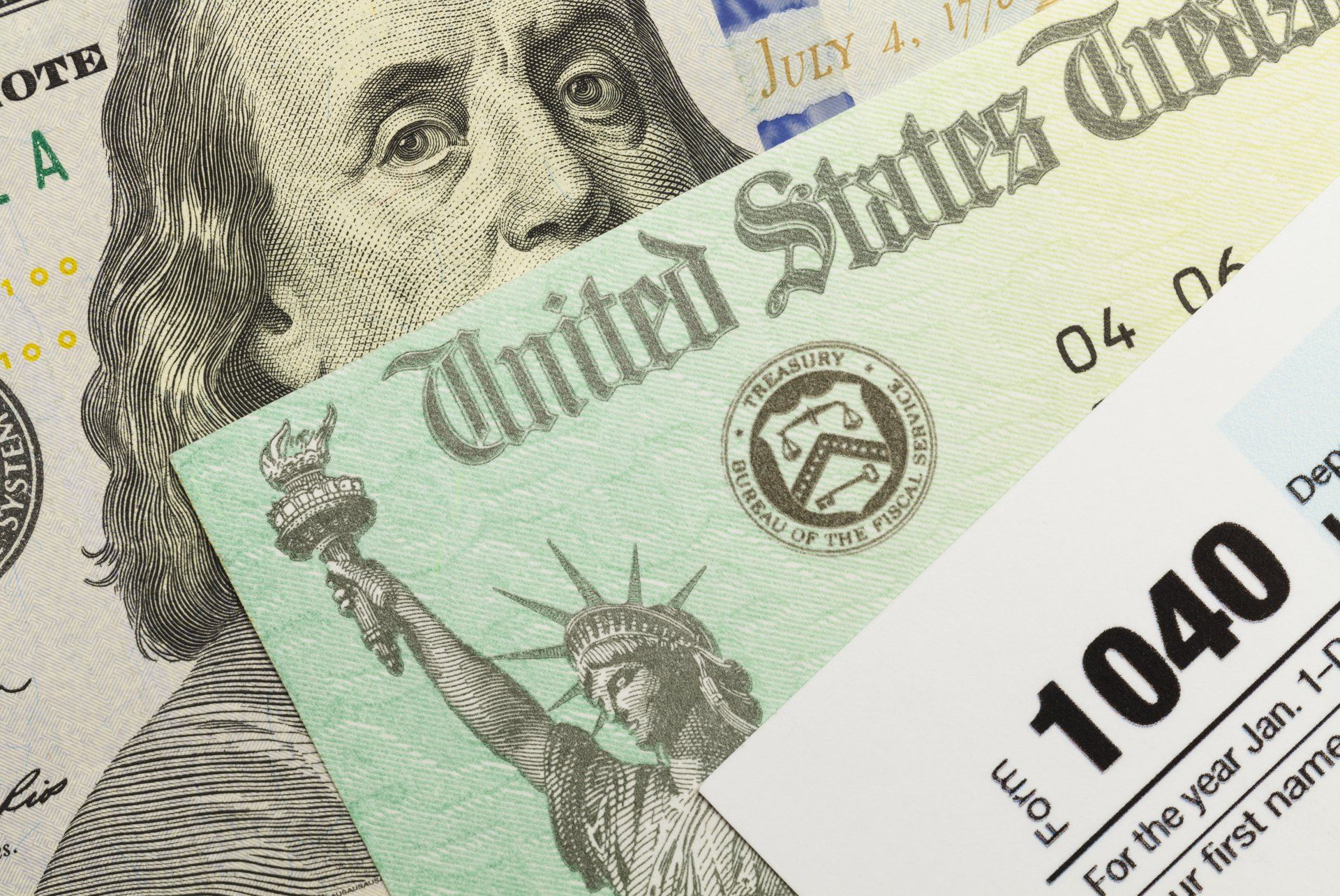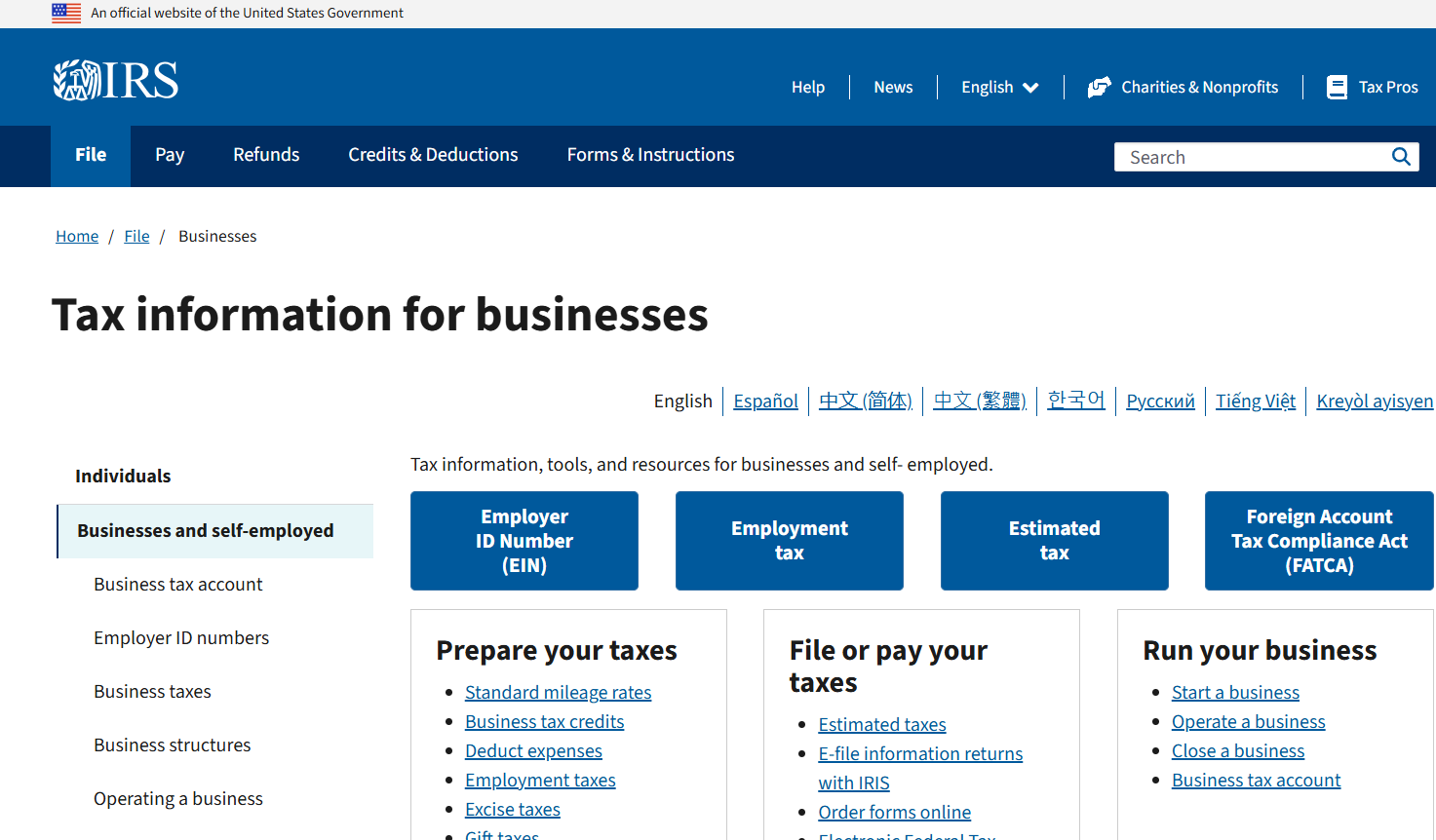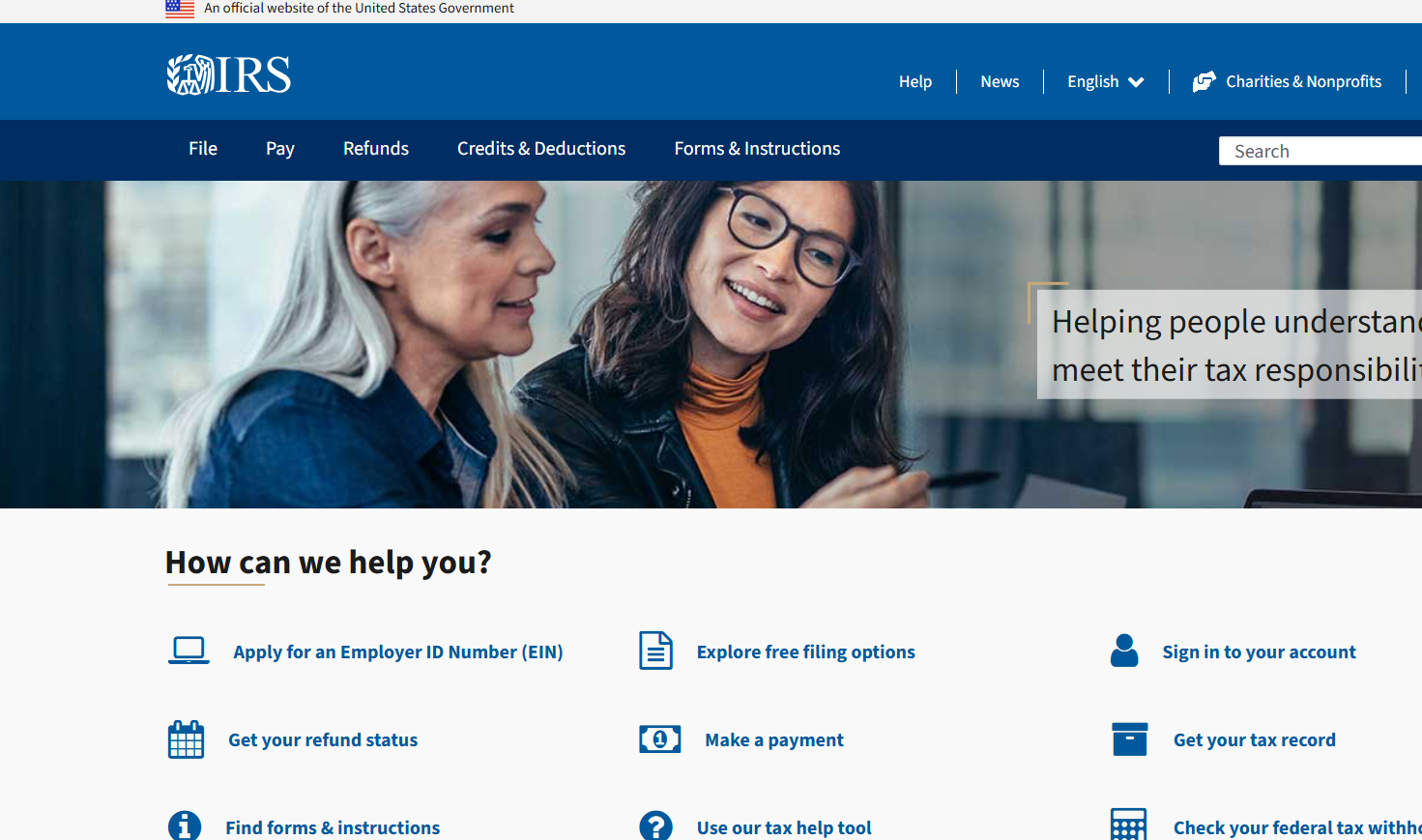2017 Tax Cuts and Jobs Act – Business Tax Changes

by Gregory S. Dowell
On December 22, President Trump signed into law the “Tax Cuts and Jobs Act” (P.L. 115-97), a sweeping tax reform law that will entirely change the tax landscape. This article describes key business tax changes that are made under the Act, including a reduction in the corporate tax rate to a flat 21% rate; an increase in expensing to $1 million; a temporary 100% first year qualifying business asset deduction; a 5-year write-off period for R&D expenses; a limitation on the deduction for business interest, and elimination of the domestic production activities deduction.
TAX RATES
Corporate Tax Rates Reduced
Under pre-Act law, corporations are subject to graduated tax rates of 15% (for taxable income of $0-$50,000), 25% (for taxable income of $50,001-$75,000), 34% (for taxable income of $75,001-$10,000,000), and 35% (for taxable income over $10,000,000). Personal service corporations pay tax on their entire taxable income at the rate of 35%.
New law. For tax years beginning after Dec. 31, 2017, the corporate tax rate is a flat 21% rate. ( Code Sec. 11(b) , as amended by Act Sec. 13001)
Dividends-Received Deduction Percentages Reduced
Under pre-Act law, corporations that receive dividends from other corporations are entitled to a deduction for dividends received. If the corporation owns at least 20% of the stock of another corporation, an 80% dividends received deduction is allowed. Otherwise, a 70% deduction is allowed.
New law. For tax years beginning after Dec. 31, 2017, the 80% dividends received deduction is reduced to 65%, and the 70% dividends received deduction is reduced to 50%. ( Code Sec. 243 , as amended by Act Sec. 13002)
Alternative Minimum Tax Repealed
Under pre-Act law, the corporate alternative minimum tax (AMT) is 20%, with an exemption amount of up to $40,000. Corporations with average gross receipts of less than $7.5 million for the preceding three tax years are exempt from the AMT. The exemption amount phases out starting at $150,000 of alternative minimum taxable income.
New law. For tax years beginning after Dec. 31, 2017, the corporate AMT is repealed. ( Code Sec. 55 , as amended by Act Sec. 12001)
For a corporation, the AMT credit is allowed to offset the regular tax liability for any tax year. For tax years beginning after 2017 and before 2022, the AMT credit is refundable in an amount equal to 50% (100% for tax years beginning in 2021) of the excess of the minimum tax credit for the tax year over the amount of the credit allowable for the year against regular tax liability. Accordingly, the full amount of the minimum tax credit will be allowed in tax years beginning before 2022. ( Code Sec. 53 , as amended by Act Sec. 12002)
EXPENSING & DEPRECIATION
Increased Code 179 Expensing
A taxpayer may, subject to limitations, elect under Code Sec. 179 to deduct (or “expense”) the cost of qualifying property, rather than to recover such costs through depreciation deductions. Under pre-Act law, the maximum amount a taxpayer could expense was $500,000 of the cost of qualifying property placed in service for the tax year. The $500,000 amount was reduced (but not below zero) by the amount by which the cost of qualifying property placed in service during the tax year exceeds $2 million. These amounts were indexed for inflation.
In general, qualifying property is defined as depreciable tangible personal property that is purchased for use in the active conduct of a trade or business, and includes off-the-shelf computer software and qualified real property (i.e., qualified leasehold improvement property, qualified restaurant property, and qualified retail improvement property).
Passenger automobiles subject to the Code Sec. 280F limitation are eligible for Code Sec. 179 expensing only to the extent of the Code Sec. 280F dollar limitations. For sport utility vehicles above the 6,000 pound weight rating and not more than the 14,000 pound weight rating, which are not subject to the Code Sec. 280F limitation, the maximum cost that may be expensed for any tax year under Code Sec. 179 is $25,000.
New law. For property placed in service in tax years beginning after Dec. 31, 2017, the maximum amount a taxpayer may expense under Code Sec. 179 is increased to $1 million, and the phase-out threshold amount is increased to $2.5 million. For tax years beginning after 2018, these amounts (as well as the $25,000 sport utility vehicle limitation) are indexed for inflation. Property is not treated as acquired after the date on which a written binding contract is entered into for such acquisition.
“Qualified real property.” The definition of Code Sec. 179 property is expanded to include certain depreciable tangible personal property used predominantly to furnish lodging or in connection with furnishing lodging. The definition of qualified real property eligible for Code Sec. 179 expensing is also expanded to include the following improvements to nonresidential real property after the date such property was first placed in service: roofs; heating, ventilation, and air-conditioning property; fire protection and alarm systems; and security systems. ( Code Sec. 179 , as amended by Act Sec. 13101)
Temporary 100% Cost Recovery of Qualifying Business Assets
Under pre-Act law, an additional first-year bonus depreciation deduction was allowed equal to 50% of the adjusted basis of qualified property, the original use of which began with the taxpayer, placed in service before Jan. 1, 2020 (Jan. 1, 2021, for certain property with a longer production period). The 50% allowance was phased down for property placed in service after Dec. 31, 2017 (after Dec. 31, 2018 for certain property with a longer production period). A first-year depreciation deduction is also electively available for certain plants bearing fruit or nuts planted or grafted after 2015 and before 2020. Film productions aren’t eligible for bonus depreciation.
New law. A 100% first-year deduction for the adjusted basis is allowed for qualified property acquired and placed in service after Sept. 27, 2017, and before Jan. 1, 2023 (after Sept. 27, 2017, and before Jan. 1, 2024, for certain property with longer production periods). Thus, the phase-down of the 50% allowance for property placed in service after Dec. 31, 2017, and for specified plants planted or grafted after that date, is repealed. The additional first-year depreciation deduction is allowed for new and used property. (The pre-Act law phase-down of bonus depreciation applies to property acquired before Sept. 28, 2017, and placed in service after Sept. 27, 2017.)
RIA caution: The Act refers to the new 100% depreciation deduction in the placed-in-service year as “100% expensing,” but the tax break should not be confused with expensing under Code Sec. 179 , which is subject to entirely separate rules (see above).
In later years, the first-year bonus depreciation deduction phases down, as follows:
- 80% for property placed in service after Dec. 31, 2022 and before Jan. 1, 2024.
- 60% for property placed in service after Dec. 31, 2023 and before Jan. 1, 2025.
- 40% for property placed in service after Dec. 31, 2024 and before Jan. 1, 2026.
- 20% for property placed in service after Dec. 31, 2025 and before Jan. 1, 2027.
For certain property with longer production periods, the beginning and end dates in the list above are increased by one year. For example, bonus first-year depreciation is 80% for long-production-period property placed in service after Dec. 31, 2023 and before Jan. 1, 2025.
First-year bonus depreciation sunsets after 2026.
For productions placed in service after Sept. 27, 2017, qualified property eligible for a 100% first-year depreciation allowance includes qualified film, television and live theatrical productions. A production is considered placed in service at the time of initial release, broadcast, or live staged performance (i.e., at the time of the first commercial exhibition, broadcast, or live staged performance of a production to an audience).
For certain plants bearing fruit or nuts planted or grafted after Sept. 27, 2017, and before Jan. 21, 2023, the 100% first-year deduction is also available.
For the first tax year ending after Sept. 27, 2017, a taxpayer can elect to claim 50% bonus first-year depreciation (instead of claiming a 100% first-year depreciation allowance). ( Code Sec. 168(k) , as amended by Act Sec. 13201)
The election to accelerate AMT credits in lieu of bonus depreciation is repealed. ( Code Sec. 168(k)(4) , as amended by Act Sec. 12001)
Luxury Automobile Depreciation Limits Increased
Code Sec. 280F limits the Code Sec. 179 expensing and cost recovery deduction with respect to certain passenger autos (the luxury auto depreciation limit). Under pre-Act law, for passenger autos placed in service in 2017, for which the additional first-year depreciation deduction under Code Sec. 168(k) is not claimed, the maximum amount of allowable depreciation deduction is $3,160 for the year in which the vehicle is placed in service, $5,100 for the second year, $3,050 for the third year, and $1,875 for the fourth and later years in the recovery period. This limitation is indexed for inflation.
For passenger automobiles eligible for the additional first-year depreciation allowance in 2017, the first-year limitation is increased by an additional $8,000. This amount is phased down from $8,000 by $1,600 per calendar year beginning in 2018. Thus, the Code Sec. 280F increase amount for property placed in service during 2018 is $6,400, and during 2019 is $4,800.
Special rules also apply to listed property, such as any passenger auto; any other property used as a means of transportation; any property of a type generally used for purposes of entertainment, recreation, or amusement; and, under pre-Act law, any computer or peripheral equipment.
New law. For passenger automobiles placed in service after Dec. 31, 2017, in tax years ending after that date, for which the additional first-year depreciation deduction under Code Sec. 168(k) is not claimed, the maximum amount of allowable depreciation is increased to: $10,000 for the year in which the vehicle is placed in service, $16,000 for the second year, $9,600 for the third year, and $5,760 for the fourth and later years in the recovery period. For passenger automobiles placed in service after 2018, these dollar limits are indexed for inflation. For passengers autos eligible for bonus first-year depreciation, the maximum first-year depreciation allowance remains at $8,000. ( Code Sec. 280F , as amended by Act Sec. 13202)
In addition, computer or peripheral equipment is removed from the definition of listed property, and so isn’t subject to the heightened substantiation requirements that apply to listed property. ( Code Sec. 280F , as amended by Act Sec. 13202)
For passenger automobiles acquired before Sept. 28, 2017, and placed in service after Sept. 27, 2017, the pre-Act phase-down of the Code Sec. 280F increase amount in the limitation on the depreciation deductions applies.
New Farming Equipment and Machinery Is 5-Year Property
Under pre-Act law, depreciable assets used in agriculture activities that are assigned a recovery period of seven years include machinery and equipment, grain bins, and fences (but no other land improvements), that are used in the production of crops or plants, vines, and trees; livestock; the operation of farm dairies, nurseries, greenhouses, sod farms, mushrooms cellars, cranberry bogs, apiaries, and fur farms; and the performance of agriculture, animal husbandry, and horticultural services. Cotton ginning assets are also assigned a recovery period of seven years, while land improvements such as drainage facilities, paved lots, and water wells are assigned a recovery period of 15 years.
For new farm machinery or equipment (other than any grain bin, cotton ginning asset, fence, or other land improvement) used in a farming business, the original use of which began with the taxpayer after Dec. 31, 2008, and was placed in service before Jan. 1, 2010, a 5-year recovery period had applied.
Under pre-Act law, any property (other than nonresidential real property, residential rental property, and trees or vines bearing fruits or nuts) used in a farming business was subject to the 150% declining balance method. Under a special accounting rule, certain taxpayers engaged in the business of farming who elect to deduct pre-productive period expenditures are required to depreciate all farming assets using the alternative depreciation system (ADS; i.e., using longer recovery periods and the straight-line method).
New law. For property placed in service after Dec. 31, 2017, in tax years ending after that date, the cost recovery period is shortened from seven to five years for any machinery or equipment (other than any grain bin, cotton ginning asset, fence, or other land improvement) used in a farming business, the original use of which begins with the taxpayer. ( Code Sec. 168(e) , as amended by Act Sec. 13203)
In addition, the required use of the 150% declining balance depreciation method for property used in a farming business (i.e., for 3-, 5-, 7-, and 10-year property) is repealed. The 150% declining balance method continues to apply to any 15-year or 20-year property used in the farming business to which the straight-line method does not apply, and to property for which the taxpayer elects the use of the 150% declining balance method. ( Code Sec. 168(b) , as amended by Act Sec. 13203)
Thus, farming property can be depreciated under the 200% declining balance method except for (1) buildings and trees or vines bearing fruits or nuts (to which the straight-line method applies), (2) property for which the taxpayer elects either the straight-line method or 150% declining balance method, (3) 15- or 20-year MACRS property that has to be depreciated under the 150% declining balance method, and (4) property subject to the ADS. Land improvements other than buildings are 15-year property, and fences and grain bins have a 7-year recovery period, and single-purpose agricultural or horticultural structures (e.g., greenhouses, specialized housing for livestock) have a 10-year recovery period.
Recovery Period for Real Property Shortened
The cost recovery periods for most real property are 39 years for nonresidential real property and 27.5 years for residential rental property. The straight line depreciation method and mid-month convention are required for such real property.
Under pre-Act law, qualified leasehold improvement property was an interior building improvement to nonresidential real property, by a landlord, tenant or subtenant, that was placed in service more than three years after the building is and that meets other requirements. Qualified restaurant property was either (a) a building improvement in a building in which more than 50% of the building’s square footage was devoted to the preparation of, and seating for, on-premises consumption of prepared meals (the more-than-50% test), or (b) a building that passed the more-than-50% test.
Qualified retail improvement property was an interior improvement to retail space that was placed in service more than three years after the date the building was first placed in service and that meets other requirements.
Qualified improvement property is any improvement to an interior portion of a building that is nonresidential real property if such improvement is placed in service after the date such building was first placed in service. Qualified improvement property does not include any improvement for which the expenditure is attributable to the enlargement of the building, any elevator or escalator, or the internal structural framework of the building.
If a taxpayer elected the ADS, residential rental property had a recovery period of 40 years. ADS is principally a straight-line depreciation system under which one depreciation period (generally longer than any other) is prescribed for each class of recovery property.
New law. For property placed in service after Dec. 31, 2017, the separate definitions of qualified leasehold improvement, qualified restaurant, and qualified retail improvement property are eliminated, a general 15-year recovery period and straight-line depreciation are provided for qualified improvement property, and a 20-year ADS recovery period is provided for such property.
Thus, qualified improvement property placed in service after Dec. 31, 2017, is generally depreciable over 15 years using the straight-line method and half-year convention, without regard to whether the improvements are property subject to a lease, placed in service more than three years after the date the building was first placed in service, or made to a restaurant building. Restaurant building property placed in service after Dec. 31, 2017, that does not meet the definition of qualified improvement property, is depreciable as nonresidential real property, using the straight-line method and the mid-month convention.
For property placed in service after Dec. 31, 2017, the ADS recovery period for residential rental property is shortened from 40 years to 30 years. ( Code Sec. 168 , as amended by Act Sec. 13204)
For tax years beginning after Dec. 31, 2017, an electing farming business-i.e., a farming business electing out of the limitation on the deduction for interest-must use ADS to depreciate any property with a recovery period of 10 years or more (e.g., a single purpose agricultural or horticultural structures, trees or vines bearing fruit or nuts, farm buildings, and certain land improvements). ( Code Sec. 168 , as amended by Act Sec. 13205)
CAPITALIZATION RULES
Costs of Replanting Citrus Plants Lost Due to Casualty
Under a special rule, the uniform capitalization rules of Code Sec. 263A don’t apply and agricultural producers and certain co-owners can deduct costs incurred in replanting edible crops for human consumption following loss or damage due to freezing temperatures, disease, drought, pests, or casualty. The rule generally requires the agricultural producer to own the plants at the time that the damage occurred and to replace them with the same type of crop on property located in the U.S. The rule also requires that co-owners materially participate in the business to deduct their portion of the replacement costs.
This exception also applies to costs incurred by persons other than the taxpayer who incurred the loss or damage, if (1) the taxpayer who incurred the loss or damage retained an equity interest of more than 50% in the property on which the loss or damage occurred at all times during the tax year in which the replanting costs were paid or incurred, and (2) the person holding a minority equity interest and claiming the deduction materially participated in the planting, maintenance, cultivation, or development of the property during the tax year in which the replanting costs are paid or incurred.
New law. For replanting costs paid or incurred after Dec. 22, 2017, but no later than Dec. 22, 2027, for citrus plants lost or damaged due to casualty, the costs may also be deducted by a person other than the taxpayer if (1) the taxpayer has an equity interest of not less than 50% in the replanted citrus plants at all times during the tax year in which the replanting costs are paid or incurred and such other person holds any part of the remaining equity interest, or (2) such other person acquires all of the taxpayer’s equity interest in the land on which the lost or damaged citrus plants were located at the time of such loss or damage, and the replanting is on such land. ( Code Sec. 263A(d) , as amended by Act Sec. 13207)
DEDUCTIONS & EXCLUSIONS
Limits on Deduction of Business Interest
Under pre-Act law, interest paid or accrued by a business generally is deductible in the computation of taxable income subject to a number of limitations. For a taxpayer other than a corporation, the deduction for interest on indebtedness that is allocable to property held for investment (investment interest) is limited to the taxpayer’s net investment income for the tax year.
Code Sec. 163(j) may disallow a deduction for disqualified interest paid or accrued by a corporation in a tax year if: (1) the payor’s debt-to-equity ratio exceeds 1.5 to 1.0 (the safe harbor ratio); and (2) the payor’s net interest expense exceeds 50% of its adjusted taxable income (generally, taxable income computed without regard to deductions for net interest expense, net operating losses, domestic production activities under Code Sec. 199, depreciation, amortization, and depletion).
New law. For tax years beginning after Dec. 31, 2017, every business, regardless of its form, is generally subject to a disallowance of a deduction for net interest expense in excess of 30% of the business’s adjusted taxable income. The net interest expense disallowance is determined at the tax filer level. However, a special rule applies to pass-through entitles, which requires the determination to be made at the entity level, for example, at the partnership level instead of the partner level.
For tax years beginning after Dec. 31, 2017 and before Jan. 1, 2022, adjusted taxable income is computed without regard to deductions allowable for depreciation, amortization, or depletion and without the former Code Sec. 199 deduction (which is repealed effective Dec. 31, 2017).
The amount of any business interest not allowed as a deduction for any taxable year is treated as business interest paid or accrued in the succeeding taxable year. Business interest may be carried forward indefinitely, subject to certain restrictions applicable to partnerships (see below). ( Code Sec. 163(j) , as amended by Act Sec. 13301)
Exemptions. An exemption from these rules applies for taxpayers (other than tax shelters) with average annual gross receipts for the three-tax year period ending with the prior tax year that do not exceed $25 million. The business-interest-limit provision does not apply to certain regulated public utilities and electric cooperatives. Real property trades or businesses can elect out of the provision if they use ADS to depreciate applicable real property used in a trade or business. Farming businesses can also elect out if they use ADS to depreciate any property used in the farming business with a recovery period of ten years or more. An exception from the limitation on the business interest deduction is also provided for floor plan financing (i.e., financing for the acquisition of motor vehicles, boats or farm machinery for sale or lease and secured by such inventory).
Partnerships. The limit on the amount allowed as a deduction for business interest is increased by a partner’s distributive share of the partnership’s excess taxable income. The excess taxable income for any partnership is the amount which bears the same ratio to the partnership’s adjusted taxable income as the excess (if any) of 30% of the adjusted taxable income of the partnership over the amount (if any) by which the business interest of the partnership, reduced by floor plan financing interest, exceeds the business interest income of the partnership bears to 30% of the adjusted taxable income of the partnership. As a result, a partner of a partnership can deduct additional interest expense the partner may have paid or incurred to the extent the partnership could have deducted more business interest. Excess taxable income is allocated in the same manner as non-separately stated income and loss. S corporations have similar rules.
Special rule for carryforward of disallowed partnership interest. In the case of a partnership, any business interest that is not allowed as a deduction to the partnership for the tax year is allocated to each partner in the same manner as non-separately stated taxable income or loss of the partnership. The partner may deduct its share of the partnership’s excess business interest in any future year, but only against excess taxable income attributed to the partner by the partnership the activities of which gave rise to the excess business interest carryforward. Any such deduction requires a corresponding reduction in excess taxable income. In addition, when excess business interest is allocated to a partner, the partner’s basis in its partnership interest is reduced (but not below zero) by the amount of such allocation, even though the carryforward does not give rise to a partner deduction in the year of the basis reduction. However, the partner’s deduction in a future year for interest carried forward does not reduce the partner’s basis in the partnership interest.
In the event the partner disposes of a partnership interest the basis of which has been so reduced, the partner’s basis in such interest shall be increased, immediately before such disposition, by the amount that any such basis reductions exceed any amount of excess interest expense that has been treated as paid by the partner (i.e., excess interest expense that has been deducted by the partner against excess taxable income of the same partnership). This rule does not apply to S corporations and their shareholders. ( Code Sec. 163(j) , as amended by Act Sec. 13301)
Modification of Net Operating Loss Deduction
Under pre-Act law, a net operating loss (NOL) may generally be carried back two years and carried over 20 years to offset taxable income in such years. However, different carryback periods apply with respect to NOLs arising in different circumstances. For example, extended carryback periods are allowed for NOLs attributable to specified liability losses and certain casualty and disaster losses.
New law. For NOLs arising in tax years ending after Dec. 31, 2017, the two-year carryback and the special carryback provisions are repealed, but a two-year carryback applies in the case of certain losses incurred in the trade or business of farming.
For losses arising in tax years beginning after Dec. 31, 2017, the NOL deduction is limited to 80% of taxable income (determined without regard to the deduction). Carryovers to other years are adjusted to take account of this limitation, and, except as provided below, NOLs can be carried forward indefinitely.
However, NOLs of property and casualty insurance companies can be carried back two years and carried over 20 years to offset 100% of taxable income in such years. ( Code Sec. 172 , as amended by Act Sec. 13302)
DEDUCTIONS
Domestic Production Activities Deduction Repealed
Under pre-Act law, taxpayers could claim a domestic production activities deduction (DPAD) under Code Sec. 199 equal to 9% (6% in the case of certain oil and gas activities) of the lesser of the taxpayer’s qualified production activities income or the taxpayer’s taxable income for the tax year. The deduction was limited to 50% of the W-2 wages paid by the taxpayer during the calendar year. Qualified production activities income was equal to domestic production gross receipts less the cost of goods sold and expenses properly allocable to such receipts. Qualifying receipts were derived from property that was manufactured, produced, grown, or extracted within the U.S.; qualified film productions; production of electricity, natural gas, or potable water; construction activities performed in the U.S.; and certain engineering or architectural services.
New law. For tax years beginning after Dec. 31, 2017, the DPAD is repealed. (Code Sec. 199, as amended by Act Sec. 13305)
Like-Kind Exchange Treatment Limited
Under pre-Act law, the like-kind exchange rule provided that no gain or loss was recognized to the extent that property-which included a wide range of property from real estate to tangible personal property-held for productive use in the taxpayer’s trade or business, or property held for investment purposes, is exchanged for property of a like-kind that also is held for productive use in a trade or business or for investment.
New law. Generally effective for transfers after Dec. 31, 2017, the rule allowing the deferral of gain on like-kind exchanges is modified to allow for like-kind exchanges only with respect to real property that is not held primarily for sale. However, under a transition rule, the pre-Act like-kind exchange rules apply to exchanges of personal property if the taxpayer has either disposed of the relinquished property or acquired the replacement property on or before Dec. 31, 2017. ( Code Sec. 1031 , as amended by Act Sec. 13303)
Five-Year Writeoff of Specified R&E Expenses
Under pre-Act law, taxpayers may elect to deduct currently the amount of certain reasonable research or experimentation (R&E) expenses paid or incurred in connection with a trade or business. Alternatively, taxpayers may forgo a current deduction, capitalize their research expenses, and recover them ratably over the useful life of the research, but in no case over a period of less than 60 months. Or, they may elect to recover them over a period of 10 years.
New law. For amounts paid or incurred in tax years beginning after Dec. 31, 2021, “specified R&E expenses” must be capitalized and amortized ratably over a 5-year period (15 years if conducted outside of the U.S.), beginning with the midpoint of the tax year in which the specified R&E expenses were paid or incurred.
Specified R&E expenses subject to capitalization include expenses for software development, but not expenses for land or for depreciable or depletable property used in connection with the research or experimentation (but do include the depreciation and depletion allowances of such property). Also excluded are exploration expenses incurred for ore or other minerals (including oil and gas). In the case of retired, abandoned, or disposed property with respect to which specified R&E expenses are paid or incurred, any remaining basis may not be recovered in the year of retirement, abandonment, or disposal, but instead must continue to be amortized over the remaining amortization period. ( Code Sec. 174 , as amended by Act Sec. 13206)
Use of this provision is treated as a change in the taxpayer’s accounting method under Code Sec. 481 , initiated by the taxpayer, and made with IRS’s consent. For R&E expenditures paid or incurred in tax years beginning after Dec. 31, 2025, the provision is applied on a cutoff basis (so there is no adjustment under Code Sec. 481(a) for R&E paid or incurred in tax years beginning before Jan. 1, 2026).
Employer’s Deduction for Fringe Benefit Expenses Limited
Under current law, a taxpayer may deduct up to 50% of expenses relating to meals and entertainment. Housing and meals provided for the convenience of the employer on the business premises of the employer are excluded from the employee’s gross income. Various other fringe benefits provided by employers are not included in an employee’s gross income, such as qualified transportation fringe benefits
New law. For amounts incurred or paid after Dec. 31, 2017, deductions for entertainment expenses are disallowed, eliminating the subjective determination of whether such expenses are sufficiently business related; the current 50% limit on the deductibility of business meals is expanded to meals provided through an in-house cafeteria or otherwise on the premises of the employer; and deductions for employee transportation fringe benefits (e.g., parking and mass transit) are denied, but the exclusion from income for such benefits received by an employee is retained. In addition, no deduction is allowed for transportation expenses that are the equivalent of commuting for employees (e.g., between the employee’s home and the workplace), except as provided for the safety of the employee.
For tax years beginning after Dec. 31, 2025, the Act will disallow an employer’s deduction for expenses associated with meals provided for the convenience of the employer on the employer’s business premises, or provided on or near the employer’s business premises through an employer-operated facility that meets certain requirements. ( Code Sec. 274 , as amended by Act Sec. 13304)
Nondeductible Penalties and Fines
Under pre-Act law, no deduction is allowed for fines or penalties paid to a government for the violation of any law.
New law. For amounts generally paid or incurred on or after Dec. 22, 2017 (see below), no deduction is allowed for any otherwise deductible amount paid or incurred (whether by suit, agreement, or otherwise) to, or at the direction of, a government or specified nongovernmental entity in relation to the violation of any law or the investigation or inquiry by such government or entity into the potential violation of any law. An exception applies to payments that the taxpayer establishes are either restitution (including remediation of property) or amounts required to come into compliance with any law that was violated or involved in the investigation or inquiry, that are identified in the court order or settlement agreement as restitution, remediation, or required to come into compliance. IRS remains free to challenge the characterization of an amount so identified; however, no deduction is allowed unless the identification is made.
An exception also applies to any amount paid or incurred as taxes due.
Restitution for failure to pay any tax, that is assessed as restitution under the Code is deductible only to the extent it would have been allowed as a deduction if it had been timely paid. ( Code Sec. 162(f) , as amended by Act Sec. 13306)
Government agencies (or entities treated as such) must report to IRS and to the taxpayer the amount of each settlement agreement or order entered into where the aggregate amount required to be paid or incurred to or at the direction of the government is at least $600 (or such other amount as may be specified by IRS). The report must separately identify any amounts that are for restitution or remediation of property, or correction of noncompliance. The report must be made at the time the agreement is entered into, as determined by IRS. ( Code Sec. 6050X , as added by Act Sec. 13306)
The provisions don’t apply to amounts paid or incurred under any binding order or agreement entered into before Dec. 22, 2017. But this exception will not apply to an order or agreement requiring court approval unless the approval was obtained before Dec. 22, 2017.
No Deduction for Amounts Paid For Sexual Harassment Subject to Nondisclosure Agreement
A taxpayer generally is allowed a deduction for ordinary and necessary expenses paid or incurred in carrying on any trade or business. However, among other exceptions, there’s no deduction for: any illegal bribe, illegal kickback, or other illegal payment; certain lobbying and political expenses; any fine or similar penalty paid to a government for the violation of any law; and two-thirds of treble damage payments under the antitrust laws.
New law. Under the Act, effective for amounts paid or incurred after Dec. 22, 2017, no deduction is allowed for any settlement, payout, or attorney fees related to sexual harassment or sexual abuse if such payments are subject to a nondisclosure agreement. ( Code Sec. 162 , as amended by Act Sec. 13307)
Employee Achievement Awards
Employee achievement awards are excludable to the extent the employer can deduct the cost of the award-generally limited to $400 for any one employee, or $1,600 for a “qualified plan award.” An employee achievement award is an item of tangible personal property given to an employee in recognition of either length of service or safety achievement and presented as part of a meaningful presentation.
New law. For amounts paid or incurred after Dec. 31, 2017, a definition of “tangible personal property” is provided. Tangible personal property does not include cash, cash equivalents, gifts cards, gift coupons, gift certificates (other than where from the employer pre-selected or pre-approved a limited selection) vacations, meals, lodging, tickets for theatre or sporting events, stock, bonds or similar items. and other non-tangible personal property. No inference is intended that this is a change from present law and guidance. ( Code Sec. 274(j) , as amended by Act Sec. 13310)
Limitation on Excessive Employee Compensation
A deduction for compensation paid or accrued with respect to a covered employee of a publicly traded corporation is limited to no more than $1 million per year. However, under pre-Act law, exceptions applied for: (1) commissions; (2) performance-based remuneration, including stock options; (3) payments to a tax-qualified retirement plan; and (4) amounts that are excludable from the executive’s gross income.
New law. For tax years beginning after Dec. 31, 2017, the exceptions to the $1 million deduction limitation for commissions and performance-based compensation are repealed. The definition of “covered employee” is revised to include the principal executive officer, the principal financial officer, and the three other highest paid officers. If an individual is a covered employee with respect to a corporation for a tax year beginning after Dec. 31, 2016, the individual remains a covered employee for all future years. ( Code Sec. 162(m) , as amended by Act Sec. 13601)
Under a transition rule, the changes do not apply to any remuneration under a written binding contract which was in effect on Nov. 2, 2017 and which was not modified in any material respect after that date. Compensation paid pursuant to a plan qualifies for this exception if the right to participate in the plan is part of a written binding contract with the covered employee in effect on Nov. 2, 2017. The fact that a plan was in existence on Nov. 2, 2017 isn’t by itself sufficient to qualify the plan for the exception. The exception ceases to apply to amounts paid after there has been a material modification to the terms of the contract. The exception does not apply to new contracts entered into or renewed after Nov. 2, 2017. A contract that is terminable or cancelable unconditionally at will by either party to the contract without the consent of the other, or by both parties to the contract, is treated as a new contract entered into on the date any such termination or cancellation, if made, would be effective. However, a contract is not treated as so terminable or cancellable if it can be terminated or cancelled only by terminating the employment relationship of the covered employee.
Deduction for Local Lobbying Expenses Eliminated
Under current law, businesses generally may deduct ordinary and necessary expenses paid or incurred in connection with carrying on any trade or business. Under pre-Act law, an exception to the general rule, however, disallows deductions for lobbying and political expenditures with respect to legislation and candidates for office, except for lobbying expenses with respect to legislation before local government bodies (including Indian tribal governments).
New law. For amounts paid or incurred on or after Dec. 22, 2017, the Code Sec. 162(e) deduction for lobbying expenses with respect to legislation before local government bodies (including Indian tribal governments) is eliminated. ( Code Sec. 162(e) , as amended by Act Sec. 13308)
Orphan Drug Credit Modified
Under pre-Act law, a drug manufacturer could claim a credit equal to 50% of qualified clinical testing expenses.
New law. For amounts paid or incurred after Dec. 31, 2017, the Code Sec. 45C orphan drug credit is limited to 25% (instead of current law’s 50%) of qualified clinical testing expenses for the tax year. Taxpayers can elect a reduced credit in lieu of reducing otherwise allowable deductions in a manner similar to the research credit under Code Sec. 280C . ( Code Sec. 45C , as amended by Act Sec. 13401)
Rehabilitation Credit Limited
Under pre-Act law, a 20% credit is provided for qualified rehabilitation expenditures with respect to a certified historic structure, i.e., any building that is listed in the National Register, or that is located in a registered historic district and is certified by the Secretary of the Interior to the Secretary of the Treasury as being of historic significance to the district. A 10% credit is provided for qualified rehabilitation expenditures with respect to a qualified rehabilitated building, which generally means a building that was first placed in service before 1936. A building is treated as having met the substantial rehabilitation requirement under the 10% credit only if the rehabilitation expenditures during the 24-month period selected by the taxpayer and ending within the tax year exceed the greater of (1) the adjusted basis of the building (and its structural components), or (2) $5,000.
Straight-line depreciation or the ADS must be used in order for rehabilitation expenditures to be treated as qualified for the credit.
New law. For amounts paid or incurred after Dec. 31, 2017, the 10% credit for qualified rehabilitation expenditures with respect to a pre-’36 building is repealed and a 20% credit is provided for qualified rehabilitation expenditures with respect to a certified historic structure which can be claimed ratably over a 5-year period beginning in the tax year in which a qualified rehabilitated structure is placed in service.
A transition rule provides that for qualified rehabilitation expenditures (for either a certified historic structure or a pre-’36 building), for any building owned or leased (as provided under pre-Act law) by the taxpayer at all times on and after Jan. 1, 2018, the 24-month period selected by the taxpayer (under Code Sec. 47(c)(1)(C)(i)), or the 60-month period selected by the taxpayer under the rule for phased rehabilitation (Code Sec. 47(c)(1)(C)(ii)), is to begin no later than the end of the 180-day period beginning on the date of the enactment, and apply to such expenditures paid or incurred after the end of the tax year in which such 24- or 60-month period ends. ( Code Sec. 47 , as amended by Act Sec. 13402)
New Credit for Employer-Paid Family and Medical Leave
Under pre-Act law, no credit is provided to employers for compensation paid to employees while on leave.
New law. For wages paid in tax years beginning after Dec. 31, 2017, but not beginning after Dec. 31, 2019, the Act allows businesses to claim a general business credit equal to 12.5% of the amount of wages paid to qualifying employees during any period in which such employees are on family and medical leave (FMLA) if the rate of payment is 50% of the wages normally paid to an employee. The credit is increased by 0.25 percentage points (but not above 25%) for each percentage point by which the rate of payment exceeds 50%. To qualify for the credit, all qualifying full-time employees have to be given at least two weeks of annual paid family and medical leave (all less-than-full-time qualifying employees have to be given a commensurate amount of leave on a pro rata basis). ( Code Sec. 45S , as added by Act Sec. 13403)
ACCOUNTING METHOD CHANGES
Taxable Year of Inclusion
In general, for a cash basis taxpayer, an amount is included in income when actually or constructively received. For an accrual basis taxpayer, an amount is included in income when all the events have occurred that fix the right to receive such income and the amount thereof can be determined with reasonable accuracy (i.e., when the “all events test” is met), unless an exception permits deferral or exclusion. A number of exceptions that exist to permit deferral of income related to advance payments. An advance payment is when a taxpayer receives payment before the taxpayer provides goods or services to its customer. The exceptions often allow tax deferral to mirror financial accounting deferral (e.g., income is recognized as the goods are provided or the services are performed).
New law. Generally for tax years beginning after Dec. 31, 2017, a taxpayer is required to recognize income no later than the tax year in which such income is taken into account as income on an applicable financial statement (AFS) or another financial statement under rules specified by IRS (subject to an exception for long-term contract income under Code Sec. 460 ).
The Act also codifies the current deferral method of accounting for advance payments for goods and services provided by Rev Proc 2004-34 to allow taxpayers to defer the inclusion of income associated with certain advance payments to the end of the tax year following the tax year of receipt if such income also is deferred for financial statement purposes. In addition, it directs taxpayers to apply the revenue recognition rules under Code Sec. 452 before applying the original issue discount (OID) rules under Code Sec. 1272 . ( Code Sec. 451 , as amended by Act Sec. 13221)
In the case of any taxpayer required by this provision to change its accounting method for its first tax year beginning after Dec. 31, 2017, such change will be treated as initiated by the taxpayer and made with IRS’s consent.
Under a special effective date provision, the AFS conformity rule applies for OID for tax years beginning after Dec. 31, 2018, and the adjustment period is six years.
Cash Method of Accounting
Under pre-Act law, a corporation, or a partnership with a corporate partner, may generally only use the cash method of accounting if, for all earlier tax years beginning after Dec. 31, ’85, the corporation or partnership met a gross receipts test-i.e., the average annual gross receipts the entity for the three-tax-year period ending with the earlier tax year does not exceed $5 million. Under current law, farm corporations and farm partnerships with a corporate partner may only use the cash method of accounting if their gross receipts do not exceed $1 million in any year. An exception allows certain family farm corporations to qualify if the corporation’s gross receipts do not exceed $25 million. Qualified personal service corporations are allowed to use the cash method without regard to whether they meet the gross receipts test.
New law. For tax years beginning after Dec. 31, 2017, the cash method may be used by taxpayers (other than tax shelters) that satisfy a $25 million gross receipts test, regardless of whether the purchase, production, or sale of merchandise is an income-producing factor. Under the gross receipts test, taxpayers with annual average gross receipts that do not exceed $25 million (indexed for inflation for tax years beginning after Dec. 31, 2018) for the three prior tax years are allowed to use the cash method.
The exceptions from the required use of the accrual method for qualified personal service corporations and taxpayers other than C corporations are retained. Accordingly, qualified personal service corporations, partnerships without C corporation partners, S corporations, and other pass-through entities are allowed to use the cash method without regard to whether they meet the $25 million gross receipts test, so long as the use of the method clearly reflects income. ( Code Sec. 448 , as amend by Act Sec. 13102)
Use of this provision results in a change in the taxpayer’s accounting method for purposes of Code Sec. 481 .
Accounting for Inventories
Under pre-Act law, businesses that are required to use an inventory method must generally use the accrual accounting method. However, the cash method can be used for certain small businesses that meet a gross receipt test with average gross receipts of not more than $1 million ($10 million businesses in certain industries). These business account for inventory as non-incidental materials and supplies.
New law. For tax years beginning after Dec. 31, 2017, taxpayers that meet the $25 million gross receipts test are not required to account for inventories under Code Sec. 471 , but rather may use an accounting method for inventories that either (1) treats inventories as non-incidental materials and supplies, or (2) conforms to the taxpayer’s financial accounting treatment of inventories. ( Code Sec. 471 , as amended by Act Sec. 13102)
Use of this provision results in a change in the taxpayer’s accounting method for purposes of Code Sec. 481 .
Capitalization and Inclusion of Certain Expenses in Inventory Costs
The uniform capitalization (UNICAP) rules generally require certain direct and indirect costs associated with real or tangible personal property manufactured by a business to be included in either inventory or capitalized into the basis of such property. However, under pre-Act law, a business with average annual gross receipts of $10 million or less in the preceding three years is not subject to the UNICAP rules for personal property acquired for resale. The exemption does not apply to real property (e.g., buildings) or personal property that is manufactured by the business.
New law. For tax years beginning after Dec. 31, 2017, any producer or re-seller that meets the $25 million gross receipts test is exempted from the application of Code Sec. 263A . The exemptions from the UNICAP rules that are not based on a taxpayer’s gross receipts are retained. ( Code Sec. 263A(b) , as amended by Act Sec. 13102 )
Use of this provision results in a change in the taxpayer’s accounting method for purposes of Code Sec. 481 .
Accounting for Long-Term Contracts
Under pre-Act law, an exception from the requirement to use the percentage-of-completion method (PCM) for long-term contracts was provided for construction companies with average annual gross receipts of $10 million or less in the preceding three years (i.e., small construction contracts) that met certain requirements. They were allowed to instead deduct costs associated with construction when they were paid and recognize income when the building was completed.
New law. For contracts entered into after Dec. 31, 2017, in tax years ending after that date, the exception for small construction contracts from the requirement to use the PCM is expanded to apply to contracts for the construction or improvement of real property if the contract: (1) is expected (at the time such contract is entered into) to be completed within two years of commencement of the contract and (2) is performed by a taxpayer that (for the tax year in which the contract was entered into) meets the $25 million gross receipts test. ( Code Sec. 460(e) , as amended by Act Sec. 13102)
Use of this PCM exception for small construction contracts is applied on a cutoff basis for all similarly classified contracts (so there is no adjustment under Code Sec. 481(a) for contracts entered into before Jan. 1, 2018).
OTHER PROVISIONS
Exclusions from Contributions to Capital
Under pre-Act law, Code Sec. 118(a) provides that the gross income of a corporation generally does not include any contribution to its capital. For purposes of this rule, Code Sec. 118(b) excludes from a contribution to the capital of a corporation any contribution in aid of construction or any other contribution from a customer or potential customer.
If property is acquired by a corporation as a contribution to capital and is not contributed by a shareholder as such, the adjusted basis of the property is zero under Code Sec. 362(c)(1) . If the contribution consists of money, Code Sec. 362(c)(2) provides that the corporation must first reduce the basis of any property acquired with the contributed money within the following 12-month period, and then reduce the basis of other property held by the corporation.
New law. Effective for contributions made after Dec. 22, 2017 (except as otherwise provided below), the Act provides that the term “contributions to capital” does not include:
- (1) any contribution in aid of construction or any other contribution as a customer or potential customer, and
- (2) any contribution by any governmental entity or civic group (other than a contribution made by a shareholder as such). ( Code Sec. 118 , as amended by Act Sec. 13312)
Exception-prior approvals. The new provision does not apply to any contribution made after Dec. 22, 2017 by a governmental entity pursuant to a master development plan that had been approved prior to such date by a governmental entity.
Repeal of Rollover of Publicly Traded Securities Gain into Specialized SBICs
Under pre-Act law, under Code Sec. 1044(a), a corporation or individual may elect to roll over tax-free any capital gain realized on the sale of publicly-traded securities to the extent of the taxpayer’s cost of purchasing common stock or a partnership interest in a specialized small business investment company (SBIC) within 60 days of the sale. The amount of gain that an individual may elect to roll over under this provision for a taxable year is limited to (1) $50,000 or (2) $500,000 reduced by the gain previously excluded under this provision; for corporations, these limits are $250,000 and $1 million, respectively. (Code Sec. 1044(b))
New law. For sales after Dec. 31, 2017, this election is repealed. (Former Code Sec. 1044, as stricken by Act Sec. 13313(a))
Tax Incentives for Investment in Qualified Opportunity Zones
The Code occasionally has provided several incentives aimed at encouraging economic growth and investment in distressed communities by providing Federal tax benefits to businesses located within designated boundaries. An example of one of these incentives is a federal income tax credit that is allowed in the aggregate amount of 39% of a taxpayer’s “qualified equity investment” in a qualified community development entity (CDE; an entity which is required to make investments in low-income communities).
New law. Effective on Dec. 22, 2017, the Act provides temporary deferral of inclusion in gross income for capital gains reinvested in a qualified opportunity fund and the permanent exclusion of capital gains from the sale or exchange of an investment in the qualified opportunity fund. ( Code Sec. 1400Z-2 , as added by Act Sec. 13823)
The Act allows for the designation of certain low-income community population census tracts as qualified opportunity zones. The designation of a population census tract as a qualified opportunity zone remains in effect for the period beginning on the date of the designation and ending at the close of the tenth calendar year beginning on or after the date of designation. ( Code Sec. 1400Z-1 , as added by Act Sec. )
Temporary deferral applies for capital gains that are reinvested in a qualified opportunity fund-an investment vehicle organized as a corporation or a partnership for the purpose of investing in qualified opportunity zone property (other than another qualified opportunity fund) that holds at least 90% of its assets in qualified opportunity zone property. Qualified opportunity zone property includes: any qualified opportunity zone stock, any qualified opportunity zone partnership interest, and any qualified opportunity zone business property. The maximum amount of the deferred gain equals the amount invested in a qualified opportunity fund by the taxpayer during the 180-day period beginning on the date of sale of the asset to which the deferral pertains. For amounts of the capital gains that exceed the maximum deferral amount, the capital gains are recognized and included in gross income.
Post-acquisition capital gains apply for a sale or exchange of an investment in opportunity zone funds that are held for at least 10 years. At the election of the taxpayer, the basis of such investment in the hands of the taxpayer is the fair market value of the investment at the date of such sale or exchange. Taxpayers continue to be allowed to recognize losses associated with investments in qualified opportunity zone funds. ( Code Sec. 1400Z-2 , as added by Act Sec. 13823)










